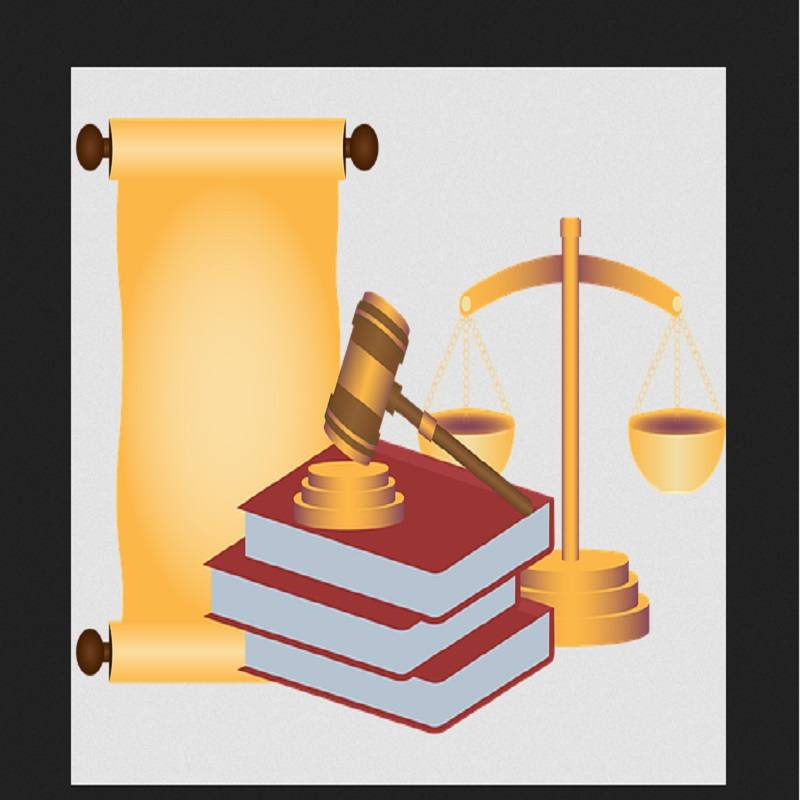What is a Divorce Order?
A divorce order is essential for couples seeking to dissolve their marriage legally in Ontario. It is the final step in the divorce process, confirming that all legal requirements have been met and the marriage is officially terminated.
Definition and Purpose
In Ontario, a divorce order is granted by the Superior Court of Justice, indicating that the marriage between the parties is legally dissolved. The primary purpose of a divorce order is to legally recognize that the marriage has ended, allowing both individuals to legally marry again if they choose. This order also serves as a formal conclusion to the legal proceedings involved in a divorce, providing closure on this front.
Difference between a Divorce Order and a Divorce Decree
The terms “divorce order” and “divorce decree” are often used interchangeably, but they can signify different stages in the divorce process depending on the jurisdiction. In Ontario, the divorce order is the final document issued by the court that legally dissolves the marriage. It is issued after all conditions for the divorce, including the separation period and settlement of matters like property division, child custody, and support, have been satisfied.
On the other hand, a “divorce decree” can refer to the interim orders issued during the divorce proceedings that address specific issues temporarily until the final order is made. However, in many cases and common usage within Ontario, the term ‘divorce decree’ is simply another way to refer to the final divorce order.
Legal Significance of a Divorce Order in Ontario
The legal significance of a divorce order in Ontario cannot be overstated. It not only marks the legal end of a marriage but also sets the stage for enforcing the rights and obligations agreed upon or ruled by the court regarding alimony, child support, custody arrangements, and division of property. Without this legal document, individuals cannot remarry in any jurisdiction of Canada, and may face complications in legal matters where marital status is pertinent.
The Process of Obtaining a Divorce Order
Filing for Divorce
Steps to Initiate the Divorce Process in Ontario
- Determine Eligibility: To file for a divorce in Ontario, you must ensure that you have been separated from your spouse for at least one year, although there are exceptions in cases of adultery or cruelty. Additionally, at least one spouse must have been resident in Ontario for at least 12 months before filing.
- Complete the Necessary Forms: The process officially begins when you complete and submit the required legal forms. The primary form needed is Form 8A (Application for Divorce), which can be filed alone or jointly with your spouse.
- File the Application: Submit the completed forms at the Superior Court of Justice or Family Court branch of the Superior Court of Justice. Filing fees must be paid unless you qualify for a fee waiver.
- Serve the Documents: If you’re filing alone, you must serve the divorce papers on your spouse, who has 30 days to respond (60 days if they live outside Canada or the United States).
- Wait for a Response: After serving the documents, if your spouse agrees, or does not respond, you can proceed with filing for a motion for default judgment, where the divorce can proceed uncontested.
Required Forms and Documentation
- Form 8A: Application for Divorce
- Form 6B: Affidavit of Service (to prove your spouse was served)
- Original marriage certificate or a certified copy
- Court filing fee or a request for a fee waiver
Judicial Process
How the Court Reviews and Grants a Divorce Order
Once all documents are filed, and assuming there is no need for a trial (in uncontested cases), the court will review the application to ensure it meets all legal requirements and that adequate arrangements for child support are in place if applicable. The judge will then grant a Divorce Order. This process can take several months, depending on the court’s schedule and any backlogs.
Types of Divorce Orders
Uncontested Divorce Orders
An uncontested divorce occurs when both spouses agree on all matters pertaining to their divorce, including custody, property division, and support. In these cases, the court typically reviews the submitted agreement to ensure it complies with legal standards and then issues a divorce order based on the agreement. This is usually quicker and less costly than contested divorces.
Contested Divorce Orders
In a contested divorce, the spouses disagree on one or more issues. This type requires a more extensive judicial process, including:
- Case Conference: A preliminary meeting to discuss the issues and explore options for settlement.
- Motions: If temporary orders are needed (e.g., for child support), motions can be filed to request these from the court.
- Trial: If the spouses cannot reach an agreement, the case will go to trial, where evidence is presented, and a judge makes the final decisions.
Contents of a Divorce Order
A Divorce Order in Ontario is not just a document that legally ends a marriage; it encompasses several elements that address the dissolution of the marital relationship and the arrangements post-divorce. Understanding these components is crucial for both parties to know their rights and obligations moving forward.
Order of Divorce
The standard Divorce Order includes:
- Effective Date of Divorce: This specifies when the divorce becomes legally effective, typically 31 days after the judge grants the divorce.
- Parties Involved: The full names of both parties involved in the divorce.
- Grounds for Divorce: While most divorces in Ontario are granted based on a one-year separation, grounds such as adultery or mental/physical cruelty are also noted if applicable.
- Declaration of Divorce: This section declares the marriage dissolved under Canadian law.
The document will also reference the case number and the court that issued the order, ensuring that all details are officially recorded and retrievable.
Ancillary Orders
Alongside the main divorce order, several ancillary orders might be issued, depending on the family’s needs and circumstances. These include:
- Child Custody and Access Orders: These orders define who the children will live with and the visitation rights of the non-custodial parent.
- Child and Spousal Support Orders: These outline the financial obligations of one spouse to the other and to any children from the marriage. The amounts and terms are typically based on federal guidelines and the specific circumstances of the family.
- Division of Property: This order details how the marital property will be divided between the spouses. Ontario law generally divides the value of the marital property equally, considering what each spouse brought into the marriage and acquired during it.
These orders are designed to ensure that all aspects of the couple’s joint life are settled fairly and legally.
Enforcement of Orders
Ensuring compliance with a Divorce Order is critical for both parties. In Ontario, several mechanisms are in place to enforce these orders:
- Filing the Order with the Family Responsibility Office (FRO): The FRO can enforce child and spousal support orders by directly collecting payments from the paying spouse and distributing them to the recipient. They can take actions such as garnishing wages or seizing property if payments are not made.
- Contempt of Court: If a party fails to comply with the terms set out in the divorce order, they can be brought back to court and potentially face penalties for contempt of court, which can include fines or even imprisonment.
- Legal Intervention: Parties can return to court to seek enforcement or modification of an order if circumstances change significantly, or if one party fails to meet their obligations.
Impact of a Divorce Order
Changes to Marital Status and Legal Obligations
A Divorce Order officially changes the marital status of the parties from married to divorced, allowing them to legally marry someone else if they choose. This change also affects several legal obligations and rights:
- Legal Independence: Each individual becomes legally independent of the other, no longer responsible for the other’s debts or legal liabilities unless specified in the divorce order.
- Estate Rights: The right to inherit from each other under a will made during the marriage typically ceases unless the will explicitly states otherwise.
- Name Changes: Individuals may choose to revert to their maiden name or a previous legal name, which can be facilitated through the divorce process.
Impact on Property Division, Spousal Support, and Child Custody
- Property Division: The divorce order finalizes the division of property between the spouses, typically splitting the marital property equally unless agreed otherwise or ordered by the court based on fairness considerations.
- Spousal Support: Depending on the circumstances, one spouse may be required to provide financial support to the other. This is particularly common where there is a significant discrepancy in the earning capacities of the spouses, or if one spouse sacrificed career opportunities for the marriage.
- Child Custody and Support: The divorce order specifies custody arrangements and support obligations for any children from the marriage. These arrangements prioritize the children’s best interests and ensure continued financial support.
Procedures for Modifying a Divorce Order if Circumstances Change
Changes in circumstances can necessitate modifications to the terms of a divorce order, particularly in relation to spousal support, child support, or custody arrangements. The steps to modify a divorce order in Ontario include:
- Documenting Changes: Significant changes that might warrant a modification include a substantial change in income, relocation, or changes in the needs of the children.
- Filing a Motion: To modify an order, one must file a motion in the same court where the divorce was finalized, providing evidence of the change in circumstances.
- Court Review: The court will review the motion and the evidence provided to determine if a modification of the order is justified. Both parties will have the opportunity to present their case.
- Issuance of a Modified Order: If the court finds that the circumstances have significantly changed, it may issue a modified order to better align with the current situation of the parties.
Enforcing a Divorce Order
Methods of Enforcement
If one party fails to adhere to the terms of a Divorce Order, particularly regarding spousal or child support, the other party has several legal avenues to enforce compliance:
- Legal Notice: Initially, sending a legal notice through an attorney can remind the non-compliant party of their obligations and the consequences of non-compliance.
- Court Motion for Contempt: If informal attempts fail, the affected party can file a motion for contempt in court. This motion requests the court to formally recognize the failure to comply with the divorce order. If found in contempt, the non-compliant party may face penalties such as fines or, in extreme cases, imprisonment.
- Garnishment: The court may order a garnishment of wages, where a portion of the non-compliant party’s income is directly transferred to the other party to fulfill support obligations.
- Seizure of Assets: As a more severe measure, the court can authorize the seizure of assets to enforce financial orders.
How FRO Can Assist with Enforcement
The Family Responsibility Office (FRO) plays a pivotal role in enforcing Divorce Orders related to support payments in Ontario. Here’s how the FRO can assist:
- Automatic Enforcement: Once a support order is filed with the FRO, it automatically takes on the responsibility of ensuring that support payments are made. The office tracks payments and takes action if payments are missed.
- Income Withholding: The FRO has the authority to directly withhold support payments from the payor’s wages or other sources of income.
- Legal Actions: The FRO can employ various legal measures to enforce support orders, such as suspending the payor’s driver’s license, seizing federal payments like income tax refunds, or reporting non-compliance to credit bureaus, which can affect the payor’s credit rating.
- Interjurisdictional Support: If the payor lives outside Ontario or even outside Canada, the FRO can work with similar agencies in other jurisdictions to enforce support payments.
Common Issues and Challenges
How to Handle Disagreements about the Order’s Terms
Disagreements over the terms of a Divorce Order, such as child custody arrangements, support payments, or property division, are common. Here’s how to handle such disputes:
- Communication and Negotiation: The first step should always be to attempt to resolve the disagreements through direct communication or mediation. Often, issues can be settled amicably without needing to return to court.
- Legal Mediation: If direct negotiation is unsuccessful, mediation by a third-party legal professional can help both parties reach a compromise.
- Modification of Orders: If circumstances have changed significantly, or if an agreement through mediation is reached, either party can file a motion to modify the divorce order in court. The modification must be approved by the court and will then replace the relevant terms of the original order.
Steps to Address Non-Compliance with the Order
Non-compliance with a Divorce Order can disrupt lives, especially when it pertains to financial support or child custody. Here are steps to address such issues:
- Document Non-Compliance: Keep detailed records of any instances of non-compliance, such as missed payments or violations of custody arrangements.
- Contact the Family Responsibility Office (FRO): For issues related to non-payment of support, registering your order with the FRO can help enforce these payments.
- Legal Action: If non-compliance persists, consider filing a motion for contempt of court. This is a serious step that can lead to penalties for the non-compliant party, including fines or imprisonment.
When to Seek Help from a Lawyer or Legal Professional
While some divorce-related issues can be resolved without legal intervention, there are certain situations where seeking legal assistance is advisable:
- Complex Disputes: If the divorce involves complex issues like international custody laws or significant assets, a lawyer’s expertise is essential.
- Non-Compliance Issues: A lawyer can provide guidance on the best course of action and represent your interests in court if necessary.
- Changes in Circumstances: Significant changes in circumstances that require modifications to the divorce order (like a change in financial status, relocation, or changes in child-rearing needs) often need legal oversight to ensure the new terms are fair and legally sound.
Understanding these common issues and challenges associated with a Divorce Order in Ontario, and knowing how to address them effectively, can help minimize stress and ensure that the terms of the divorce are maintained and respected by all parties involved.
Numan Bajwa is the Founding Partner at Bluetown Law – Family Lawyers. He earned his Juris Doctor from the University of Detroit Mercy School of Law (2011–2014) and holds an Honours degree in Criminology from the University of Windsor (2003–2008).









